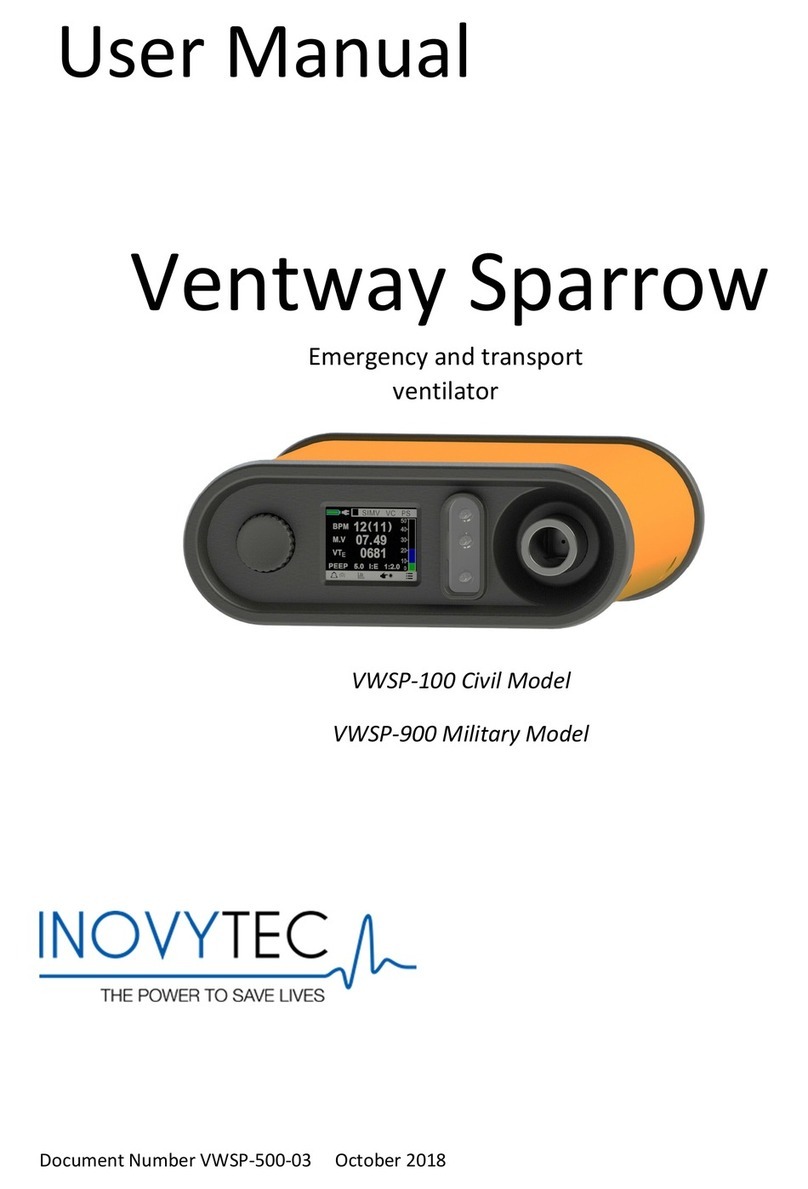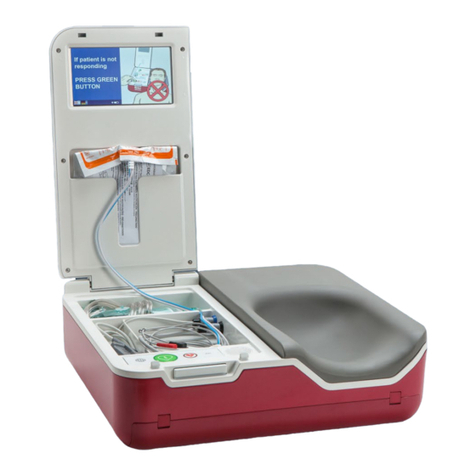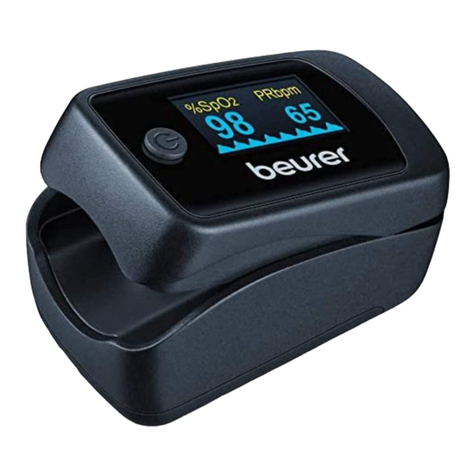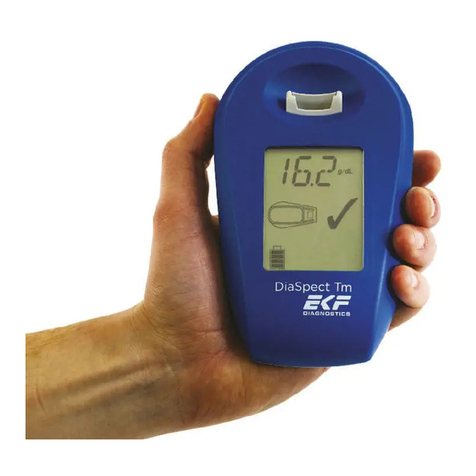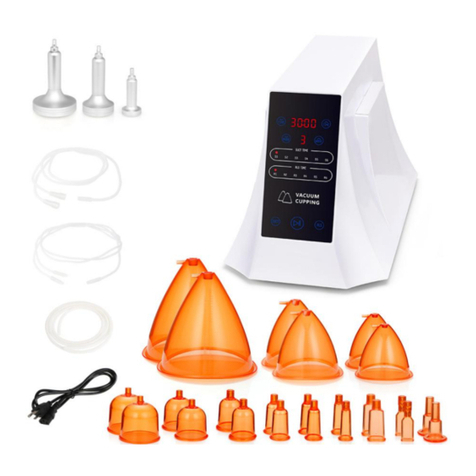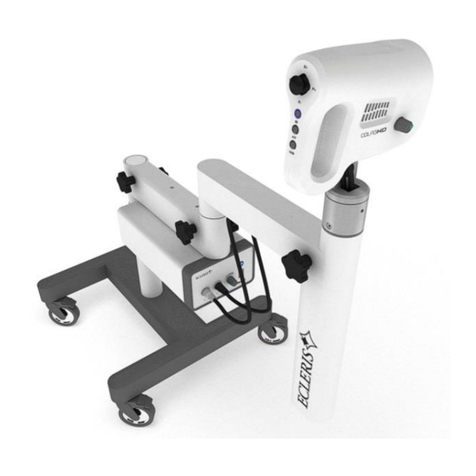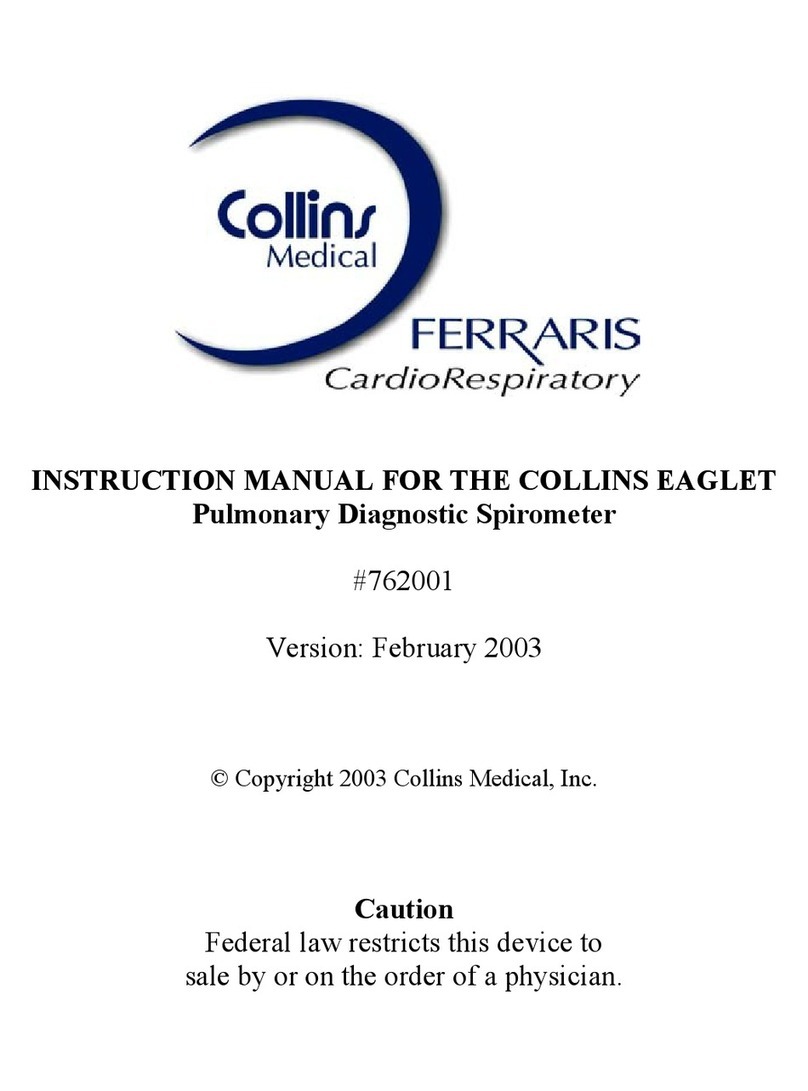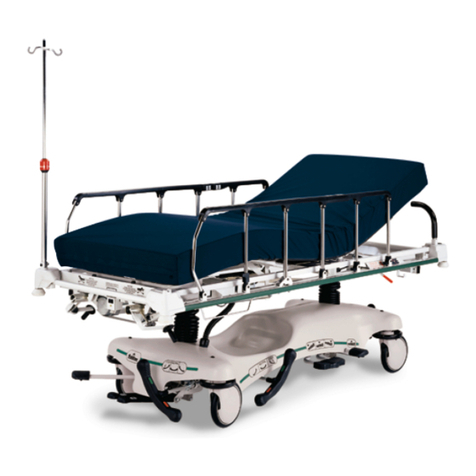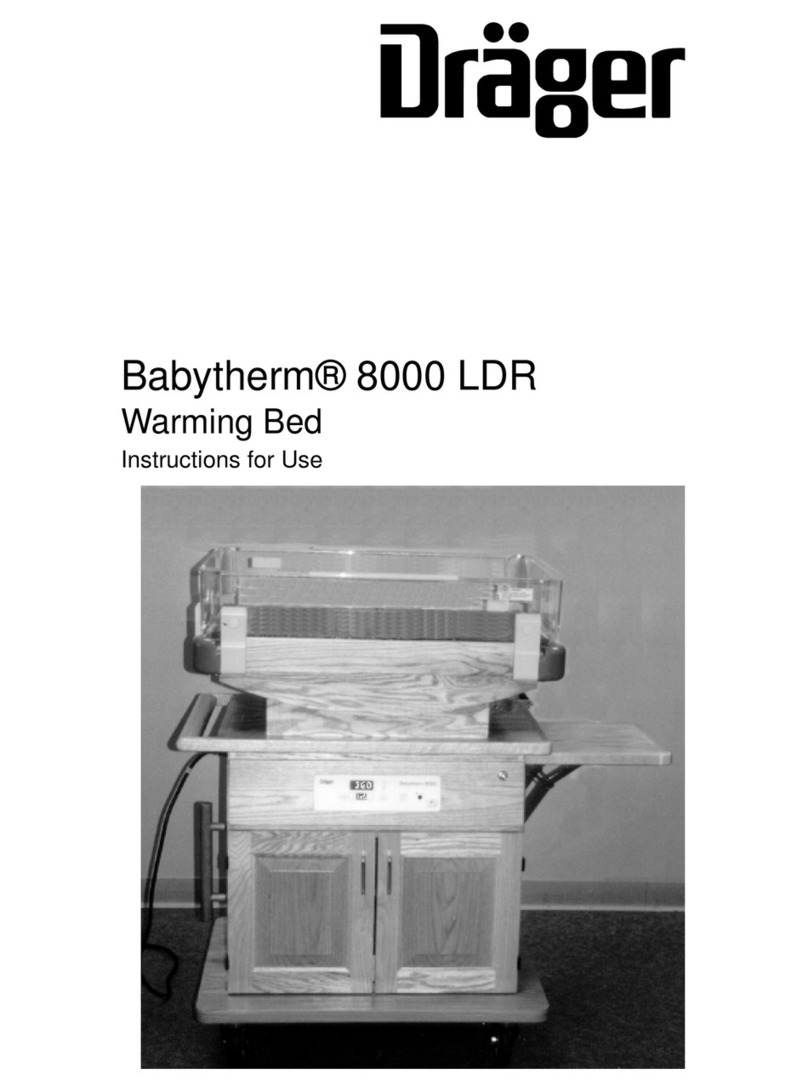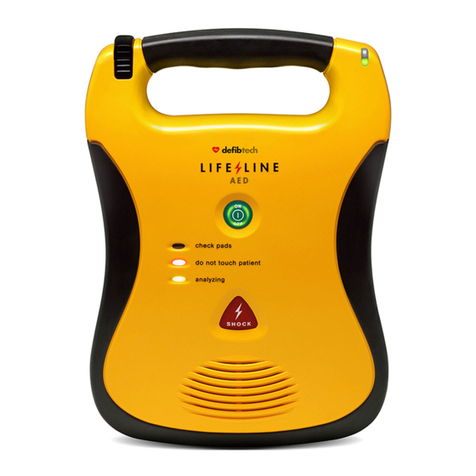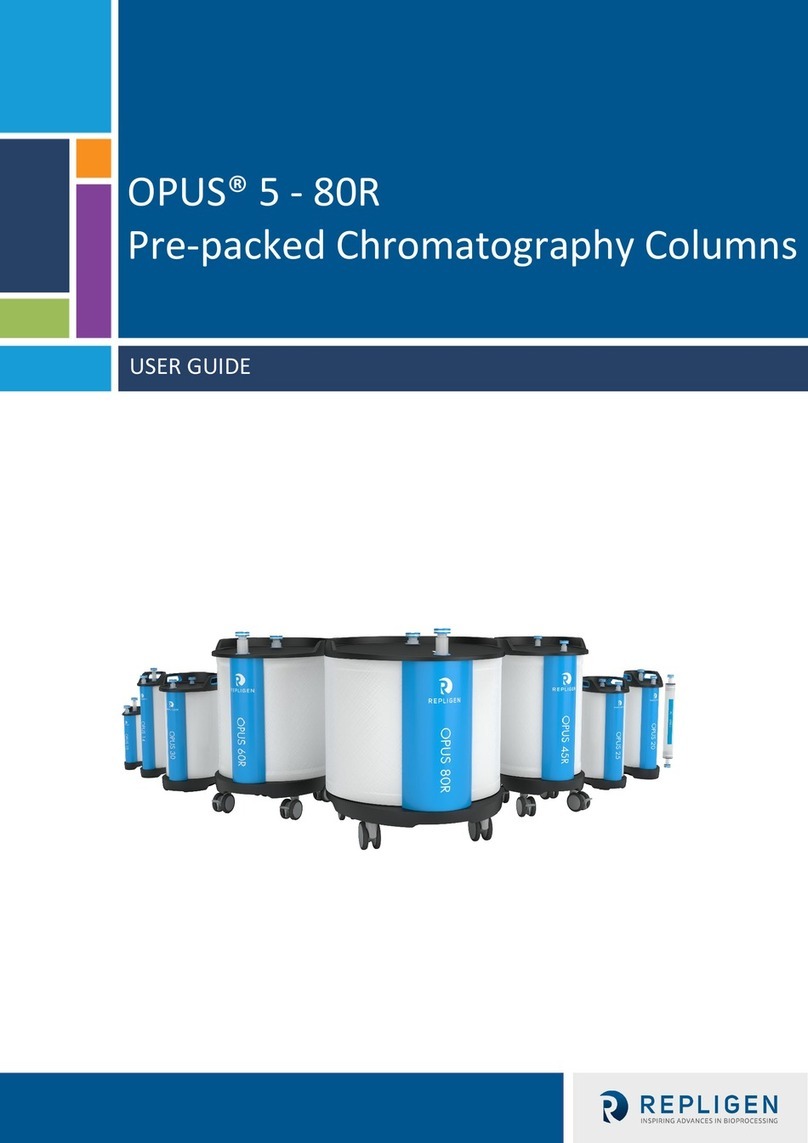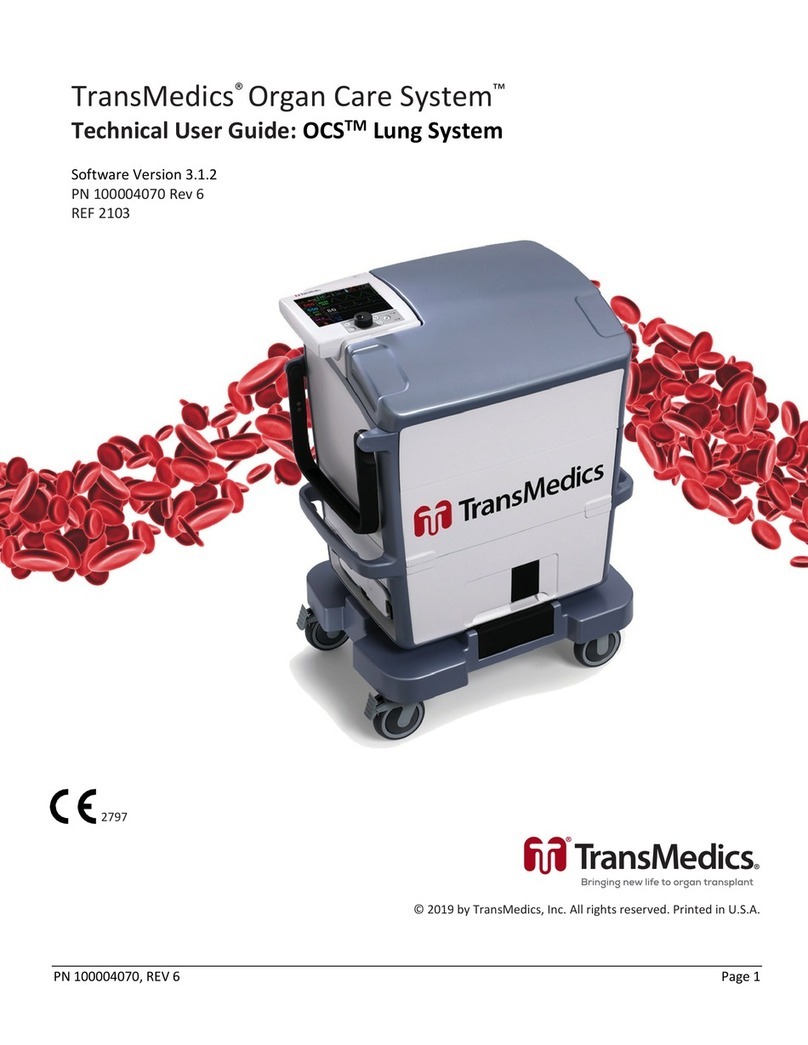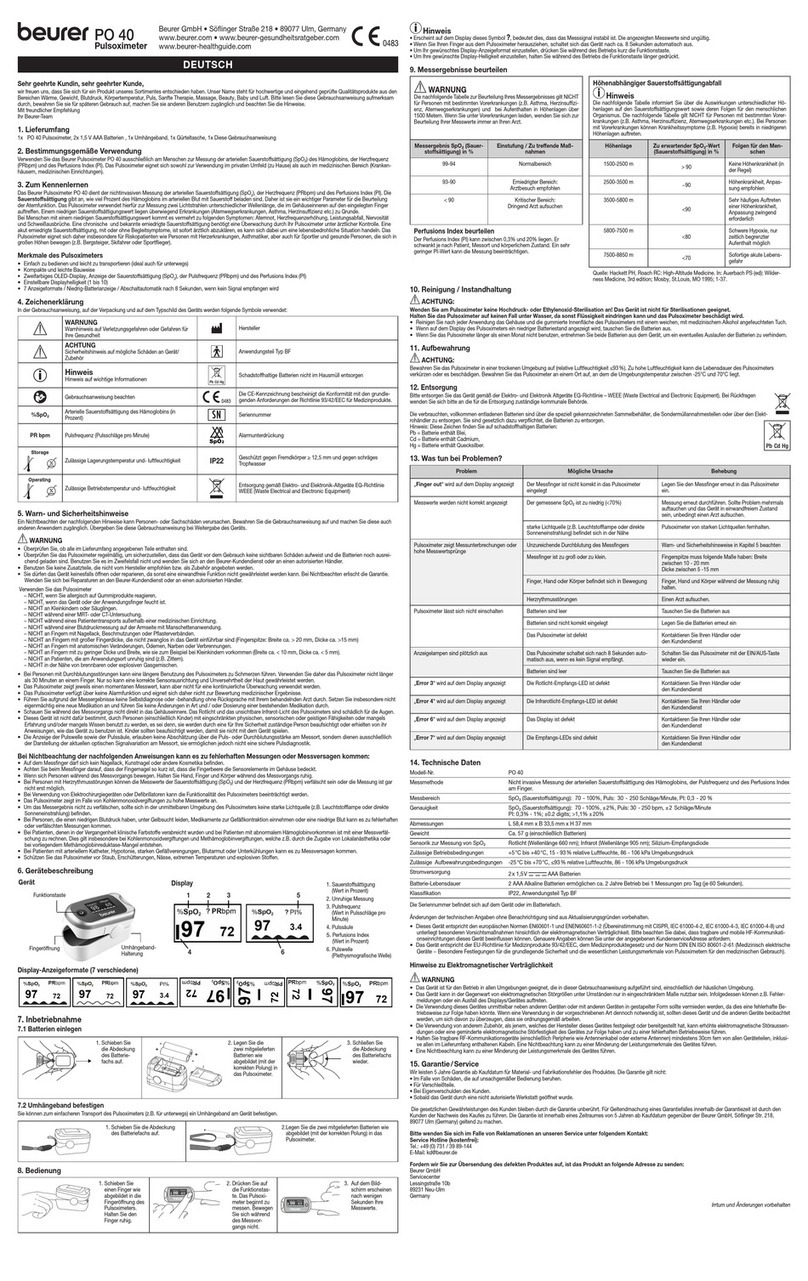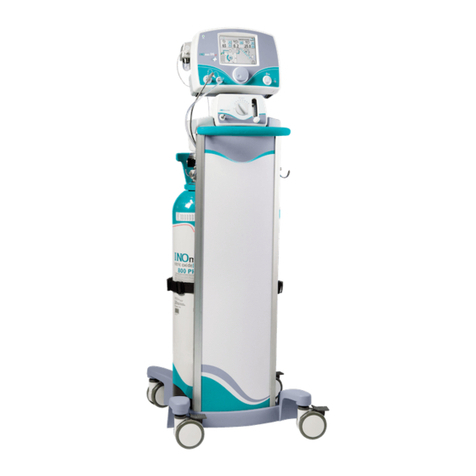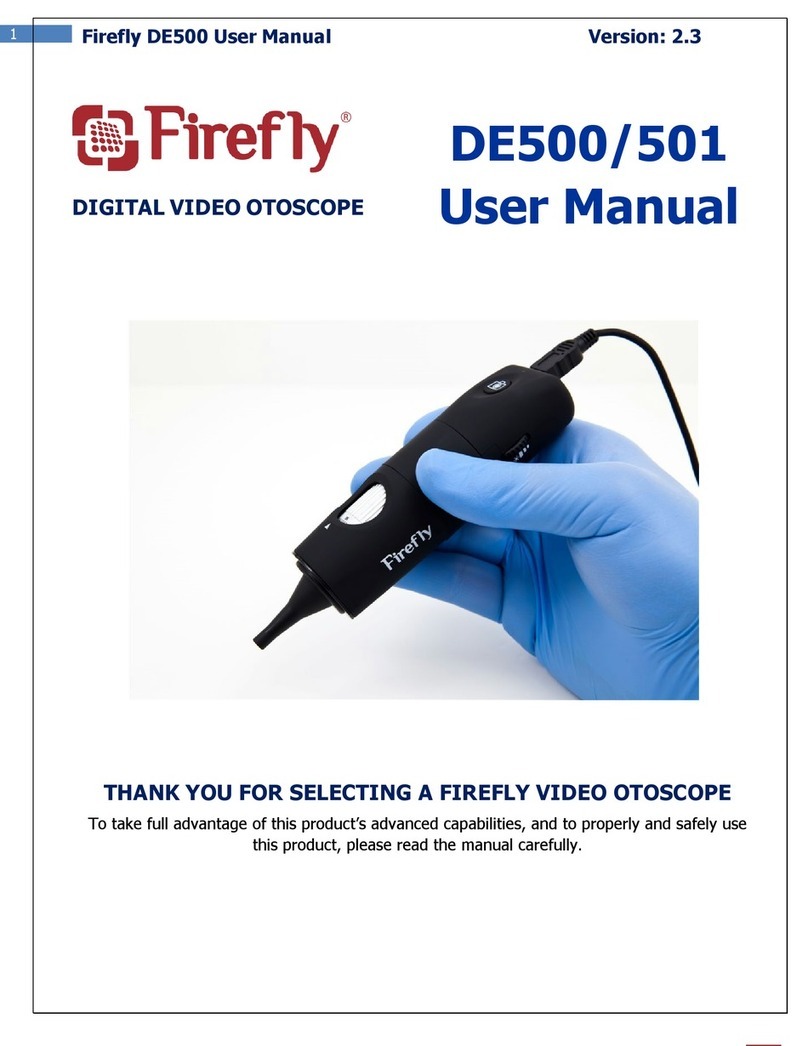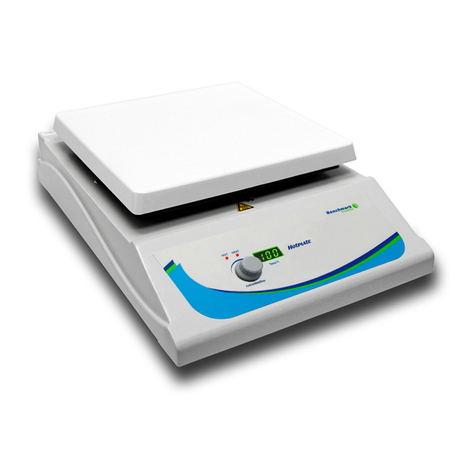Inovytec Ventway Sparrow User manual

Document Number: VWSP-500-11
VWSP-100 Civil Model
VWSP-100MR Civil Model
VWSP-900 Robust Model
VWSP-900 MR Robust Model
User Manual
Ventway
Sparrow
Emergency and transport
ventilator

Ventway Sparrow User Manual
Page 2 of 144
Important
This User Manual is subject to periodic review, update and revision.
Do not use a defective product. Do not repair this product or any of its parts.
If this device does not perform properly, contact an Inovytec representative.
The user of this product has sole responsibility for any malfunction that results
from improper use, faulty maintenance, improper repair, unauthorized
service, damage, or alteration by anyone other than Inovytec Medical
Solutions Ltd.
The safety, reliability, and performance of this device can be assured only
under the following conditions:
•The device has been used according to the accompanying operating
instructions.
•All fittings, extensions, readjustments, changes, or repairs have been
carried out by Inovytec Medical Solutions Ltd.'s authorized represen-
tatives.
No part of this publication may be reproduced, stored in a retrieval system or
transmitted in any form by any means, electronic, mechanical, photo
reproductive, recording or otherwise without the express prior written
permission of Inovytec Medical Solutions Ltd.
Inovytec Medical Solutions Ltd. reserves the right to change or improve its
products and accompanying technical literature without specific notice of
changes or improvements.
This product is protected by patents listed on the Inovytec website.

Ventway Sparrow User Manual
Page 3 of 144
Contact Information:
Inovytec Medical Solutions Ltd.
5 HaTidhar St.,
Raanana 4366507, Israel
Tel: +972 9 779 41 35
Fax: +972 9 779 41 38
E-mail: Info@Inovytec.com
Web Site: http://www.Inovytec.com
Disclaimer
Information provided by Inovytec Medical Solutions Ltd. is believed to be
accurate and reliable. However, Inovytec assumes no responsibility for the
use of such information, nor for any infringements of patents or other rights
of third parties, that may result from its use.
FDA Tracking Requirements
U.S. Federal Law (21 CFR 821) requires the tracking of ventilators. Under this
law, owners of this ventilator must notify Inovytec Medical Solutions Ltd. if
this product is received; lost, stolen, or destroyed; donated or resold; or
otherwise distributed to a different organization. If any such event occurs,
contact Inovytec in writing with the following information:
•Originator's organization – Company name, address, contact name, and
contact phone number
•Model number, and serial number of the ventilator
•Disposition of the ventilator (for example, received, lost, stolen,
destroyed, distributed to another organization), new location and/or
organization (if known and different from originator’s organization) –
company name, address, contact name, and contact phone number
•Date when the change took effect
Please address this information to Inovytec Medical Solutions Ltd. at the
address given above.
PLEASE READ THIS USER MANUAL BEFORE OPERATING THE SYSTEM.

Ventway Sparrow User Manual
Page 4 of 144
CONTENTS
1. About This User Manual..........................................................................................................9
1.1. TYPES OF WARNINGS, CAUTIONS AND NOTES.......................................................................9
1.2. GLOSSARY AND ABBREVIATIONS ...................................................................................................10
2. Overview of System .............................................................................................................. 11
2.1. DESCRIPTION OF DEVICE .............................................................................................................11
THE VENTWAY IS A PORTABLE VENTILATOR,USED FOR TRANSPORT IN PREHOSPITAL,FIELD HOSPITAL,AND HOSPITAL
SETTINGS AS WELL AS EMS APPLICATIONS. ............................................................................................11
VENTWAY IS EASY TO SET UP,SELF-SUFFICIENT AND LIGHTWEIGHT. ..............................................................11
3. Conditions for Use ................................................................................................................ 12
3.1. INDICATIONS FOR USE ................................................................................................................12
3.2. CONTRAINDICATIONS .................................................................................................................13
3.3. LIMITATIONS OF USE .................................................................................................................13
4. Safety ...................................................................................................................................14
4.1. ELECTRICAL SAFETY ...................................................................................................................14
4.2. EMC COMPLIANCE ...................................................................................................................14
4.2.1. EMISSIONS ...................................................................................................................15
4.2.2. IMMUNITY ...................................................................................................................16
4.3. SAFETY INSTRUCTIONS ...............................................................................................................17
5. System Components .............................................................................................................23
5.1. UNPACKING THE DEVICE .............................................................................................................23
5.2. VENTILATOR –FRONT PANEL.......................................................................................................24
5.3. VENTILATOR –REAR PANEL.........................................................................................................24
5.3.1. Ventilator – Use configuration.....................................................................................24
5.4. PATIENT CIRCUIT .......................................................................................................................25
5.5. PNEUMATIC SECTION –THEORY OF OPERATION................................................................................27
6. Connecting the Ventilator ..................................................................................................... 30
6.1. FRONT PANEL CONNECTIONS.......................................................................................................30
6.2. REAR PANEL CONNECTIONS.........................................................................................................30
7. Power On/Off and Display Startup Screen............................................................................. 31
7.1. NORMAL START........................................................................................................................31
7.2. QUICK START ...........................................................................................................................31
7.3. SHUTTING DOWN THE SYSTEM.....................................................................................................33
7.4. STARTUP DURING VENTILATION ...................................................................................................34
8. Navigating the GUI screens ................................................................................................... 35
8.1. SELECTING SCREEN OPTIONS .......................................................................................................35
8.2. EDITING FIELDS ........................................................................................................................35
8.3. NAVIGATING BETWEEN SCREENS ..................................................................................................35
8.4. CONFIRMING OR CANCELLING A MESSAGE......................................................................................36
8.5. SYMBOLS USED IN THE SYSTEM .....................................................................................................37
8.6. SYSTEM INDICATORS ..................................................................................................................38
8.6.1. Battery Status ..............................................................................................................38
8.6.2. indicators .....................................................................................................................39
8.6.3. Alarms..........................................................................................................................39
9. Getting Started with Ventway Sparrow................................................................................. 40

Ventway Sparrow User Manual
Page 5 of 144
9.1. CONNECTING VENTILATOR,PATIENT CIRCUIT,ENDOTRACHEAL TUBE/FACEMASK ......................................41
9.2. DISCONNECT PATIENT ................................................................................................................43
9.3. PATIENT WEIGHT......................................................................................................................44
9.4. VENTILATION MODE..................................................................................................................45
9.5. VENTILATION PARAMETERS .........................................................................................................46
9.6. NUMERICAL REPRESENTATION OF BREATH PARAMETERS....................................................................47
9.7. PRESSURE AND FLOW GRAPHS ......................................................................................................49
10. Main Menu ......................................................................................................................... 50
10.1. MAIN MENU/NEW PATIENT (DISCONNECT PATIENT SCREEN)...........................................................51
10.2. MAIN MENU/VENT PARAMS ....................................................................................................51
10.2.1. MAIN MENU/Vent Params/Trigger Sensitivity ..........................................................52
10.2.2. MAIN MENU/Vent Params/Vent Mode .....................................................................52
10.2.3. MAIN MENU/Vent Params/O2Enrichment................................................................52
10.2.4. MAIN MENU/Vent Params/Patient Weight...............................................................53
10.3. MAIN MENU/ALARM SETTINGS ..............................................................................................53
10.3.1. Boot Fail alarm...........................................................................................................53
10.4. MAIN MENU/ADVANCED SETTINGS ..................................................................................54
10.4.1. MAIN MENU/Adv Settings/Load Default ...................................................................54
10.4.2. MAIN MENU/ADV SETTINGS/Brightness ...................................................................55
10.4.3. MAIN MENU/Adv Settings/Alarm volume .................................................................55
10.4.4. MAIN MENU/Adv Settings/Language........................................................................55
10.4.5. MAIN MENU/Adv Settings/Tech mode ......................................................................56
11. Warnings and Alarms .......................................................................................................... 71
11.1. BOOT FAIL ALARMS.................................................................................................................71
11.2. SUMMARY OF ALARM TYPES .....................................................................................................72
11.3. SUMMARY OF ALARM LEVELS .....................................................................................................73
11.4. WARNING EXAMPLE ................................................................................................................74
11.5. ALARM EXAMPLE ....................................................................................................................74
11.6. CHARACTERISTICS OF ALARM INDICATOR LIGHTS .............................................................75
11.7. ALARM SIGNAL SOUND PRESSURE LEVEL RANGE .................................................................76
11.8. BATTERY STATUS ALARMS .................................................................................................77
12. Default Parameters.............................................................................................................78
12.1. START VOLUME VENTILATION ....................................................................................................78
12.1.1. Oxygen supply............................................................................................................78
12.1.2. Recommended devices for monitoring of oxygen .....................................................80
12.1.3. Additional recommended legally marketed components / accessories .....................81
12.2. ALARM DEFAULT PARAMETERS:5KG TO 70+ KG..........................................................................82
12.3. ALARM DEFAULT PARAMETERS:ALL PATIENT WEIGHTS....................................................................82
13. Labels and Symbols.............................................................................................................83
13.1. LABELS .................................................................................................................................83
13.2. SYMBOLS ..............................................................................................................................85
14. Cleaning and Disinfecting .................................................................................................... 86
15. Ventilation Methods ........................................................................................................... 87
15.1. SIMV-VC (PS) FLOW CHART ....................................................................................................87
15.2. CPAP –SPONTANEOUS BREATHING MODE ...................................................................................90
15.3. SIMV-PC.............................................................................................................................93

Ventway Sparrow User Manual
Page 6 of 144
15.4. BACKUP VENTILATION MODE ....................................................................................................96
15.4.1. Backup Ventilation in CPAP........................................................................................96
15.4.2. Backup Ventilation before starting patient ventilation..............................................97
15.5. IMV VC (CPR) .....................................................................................................................99
15.6. CPR ..................................................................................................................................101
15.7. SETTING THE PEEP VALUE ......................................................................................................102
16. Service and Maintenance .................................................................................................. 104
16.1.DEVICE CALIBRATION AND SOFTWARE UPGRADES ........................................................................104
17. Troubleshooting................................................................................................................ 105
18. Specifications.................................................................................................................... 106
18.1. DIMENSIONS AND WEIGHT .....................................................................................................106
18.2. ENVIRONMENTAL SPECIFICATIONS ............................................................................................107
18.3. HARSH ENVIRONMENTAL CONDITIONS...........................................................................107
18.3.1. Operation in extreme high / low temperatures .......................................................108
18.3.2. Operation in High or Low Altitude ...........................................................................108
18.3.3. Airborne particulates ...............................................................................................109
18.4. POWER SUPPLY ....................................................................................................................110
18.5. VENTILATION PERFORMANCE...................................................................................................111
18.6. STANDARDS AND SAFETY REQUIREMENTS ...................................................................................112
19. CLEANING AND ROUTINE MAINTENANCE ..........................................................................113
19. Batteries ........................................................................................................................... 114
19.1. BATTERY MAINTENANCE ........................................................................................................114
20. Parts and Accessories........................................................................................................ 115
21. Regulatory ........................................................................................................................ 116
22. Warranty .......................................................................................................................... 117
23. Appendix – Test Alarms..................................................................................................... 118
23.1. BACKUP VENTILATION............................................................................................................118
23.2. CPAP VENTILATION WITH BACKUP VENTILATION ..........................................................................119
23.3. PATIENT DISCONNECT ............................................................................................................120
23.4. HIGH PEEP.........................................................................................................................121
23.5. LOW PEEP ........................................................................................................................123
23.6. VALVE BLOCKED....................................................................................................................125
23.7. PRESSURE ALARM..................................................................................................................126
23.8. MINUTE VOLUME (MV) ALARM...............................................................................................127
23.9. LEAK ALARM........................................................................................................................128
23.10. TIDAL VOLUME ALARM.........................................................................................................129
23.11. I:E ALARM.........................................................................................................................130
23.12. APNEA ALARM....................................................................................................................131
23.13. POWER ALARM...................................................................................................................132
23.14. LOW BATTERY ALARM ..........................................................................................................133
23.15. BATTERY TYPE ALARM ..........................................................................................................134
23.16. VOLTAGE ALARM ................................................................................................................135
23.17. TEMPERATURE ALARM .........................................................................................................136
23.18. TUBE DISCONNECT ALARM ....................................................................................................137
23.19. ALTITUDE CHANGE ALARM ....................................................................................................138
23.20. SHUTDOWN ALARM .............................................................................................................139

Ventway Sparrow User Manual
Page 7 of 144
23.21. VENTILATION DURING STANDBY (DUE TO PATIENT INSPIRATORY EFFORT) ..........................................140
23.22. START-UP DURING VENTILATION ...........................................................................................141
23.23. MISCELLANEOUS ALARMS .....................................................................................................143
24. Appendix – Menu Hierarchy.............................................................................................. 144

Ventway Sparrow User Manual
Page 8 of 144
Obtaining Help
If you have a ventilator problem that you cannot solve, and the ventilator was
purchased directly from Inovytec,you may contact Inovytec at
info@Inovytec.com.
If you have a ventilator problem that you cannot solve, and the ventilator was
purchased from an authorized Inovytec distributor, please contact your
distributor directly to report the problem.
Note: If this ventilator has not been purchased directly
from Inovytec, please ensure that it has been purchased
from an authorized distributor of Inovytec. To obtain a list
of authorized distributors, contact Inovytec at
info@Inovytec.com.

Ventway Sparrow User Manual
Page 9 of 144
1. ABOUT THIS USER MANUAL
This User Manual provides the information necessary to operate and maintain
the Ventway Sparrow ventilator.
PLEASE READ THIS USER MANUAL BEFORE OPERATING THE SYSTEM. If any
part of this User Manual is not clear, contact Customer Support for assistance.
1.1. TYPES OF WARNINGS, CAUTIONS AND NOTES
Three types of special message appear in this User Manual:
Warning: A warning indicates precautions to avoid the
possibility of personal injury or death.
Caution: A caution indicates a condition that may lead
to damage to equipment, or a lower quality of treat-
ment.
Note: A note provides other important information.
PLEASE RETAIN THIS USER MANUAL FOR FUTURE REFERENCE.

Ventway Sparrow User Manual
Page 10 of 144
1.2. GLOSSARY AND ABBREVIATIONS
Item
Description
Apnea
Temporary cessation of breathing
BPM
Breaths Per Minute
CPAP
Continuous Positive Airway Pressure
lpm
Liters per minute
I:E Ratio
Inspiratory to Expiratory ratio
duration
Mandatory Breath
Ventilator initiated breath
MV
Minute Volume
NIV
Non-Invasive Ventilation
PC
Pressure Control
Peak Flow
Maximum volumetric flow
PEEP
Positive End Expiratory Pressure
PIP
Peak Inspiratory Pressure
Pressure support
Preset pressure delivered to the
patient, on top of the PEEP, during
triggered breath
PSV
Pressure Support Ventilation
SIMV VC PS
Synchronized Intermittent
Mechanical Ventilation with
Volume Control and Pressure
Support
Te
Expiratory Time
Ti
Inspiratory Time
Tidal Volume
Normal volume of air displaced
between normal inhalation and
exhalation when extra effort is not
applied
Triggered breath
Patient initiated breath
TVe
Expired Tidal volume
TVi
Inspired Tidal volume

Ventway Sparrow User Manual
Page 11 of 144
2. OVERVIEW OF SYSTEM
2.1. DESCRIPTION OF DEVICE
The Ventway is a portable ventilator, used for transport in prehospital, field
hospital, and hospital settings as well as EMS applications.
Ventway is easy to set up, self-sufficient and lightweight.
The ventilator is suitable for non-invasive ventilation for a full non-vented
ventilation face mask or invasive ventilation via an endotracheal tube and
tracheostomy.
Note: The power supply needs to be firmly and permanently
secured in any EMS environment in which the ventilator is
used.
Note: The Ventway Sparrow is able to work with an MR
scanner at a maximum power of three tesla. As a precaution,
locate the ventilator as far as possible from the coils – at
least one meter. Keep a 10cm distance between the patient
circuit transducer and the patient's body. The ventilator
must be operated only with the internal battery.
MRI Safety Information
The Ventway Sparrow Models VWSP100MR and VWSP900MR may be safely
used in the MR environment up to 3 Tesla. The device should be at least 1
meter from the bore. Failure to follow these conditions may result in injury.

Ventway Sparrow User Manual
Page 12 of 144
Do not use the Ventway Sparrow Models VWSP100 and VWSP900 in MR
environment, as safety in MR environment has not been tested.
3. Conditions for Use
3.1. INDICATIONS FOR USE
The Ventway Sparrow ventilator is intended to provide continuous or
intermittent ventilatory support for the care of individuals who require
mechanical ventilation. Specifically, the ventilator is applicable for adult
and pediatric patients weighing at least 5 kg (11 lb.), who require the
following types of ventilatory support: SIMV - VC (PS) or CPAP.
The Ventway Sparrow lung ventilator is intended for emergency use and
during transportation. It may be used for invasive or noninvasive
ventilation presets. It may be used in hospitals, pre-hospital (transport)
and field environments.
Models VWSP100MR and VWSP900MR may be used in a Magnetic
Resonance (MR) environment up to 3 Tesla.
The ventilator is a restricted medical device intended for use by
qualified, trained personnel under the direction of a physician.

Ventway Sparrow User Manual
Page 13 of 144
3.2. CONTRAINDICATIONS
•Depending on the legal status of DNR, DNAR or DNACPR instructions in
your location, use of this device may be contraindicated. Consult your
legal advisor for specific guidelines in this respect.
•Acute Pneumothorax
3.3. LIMITATIONS OF USE
Clinical situations potentially affecting accuracy or performance:
•Controlling the flow in the presence of difficult airways, such as severe
lung blockage and asymmetric air entrance to the lung
•Low compliance of the airways
•Asynchronization between patient and ventilator
•Barotrauma
•Behavior of the ventilator in case of barotrauma, monitoring and
displaying alarms in these cases.
Note: The use of humidification is not recommended, due to
potential blockage of control and measurement tubes.

Ventway Sparrow User Manual
Page 14 of 144
4. SAFETY
4.1. ELECTRICAL SAFETY
The device complies with requirements of IEC/EN 60601-1 for general
requirements for safety of medical electrical equipment:
•Class I Equipment BF type applied part
•Mode of operation: Continuous measurement
•Degree of mobility: Portable
4.2. EMC COMPLIANCE
The unit has Class B compliance.
The Ventway Sparrow is suitable for the electromagnetic environment of
typical commercial or hospital settings.
During the immunity testing described below the Ventway Sparrow
continued to provide uninterrupted delivery of tidal volume, respiratory rate,
PIP, and PEEP within the device specifications.

Ventway Sparrow User Manual
Page 15 of 144
4.2.1. EMISSIONS
Electromagnetic Emissions
The Ventway Sparrow is intended for use in the electromagnetic environment of hospitals
and EMS environments . The user should assure that it is used in such an environment.
Emission Tests
Compliance
Electromagnetic Environment – Guidance
RF emissions
CISPR 11 Group 1
The Ventway Sparrow uses RF energy only for its internal
function. Therefore, its RF emissions are very low and are
not likely to cause any interference in nearby electronic
equipment.
RF emissions
CISPR 11
Class B
The Ventway Sparrow is suitable for use in all
establishments, including use in the vicinity of
domestic establishments and those directly connected
to the public low-voltage power supply network that
supplies buildings used for domestic purposes.
Harmonic
emissions
IEC 61000-3-2
A
Voltage
fluctuations /
flicker emissions
IEC 61000-3-3
Per
Standard

Ventway Sparrow User Manual
Page 16 of 144
4.2.2. IMMUNITY
Electromagnetic Immunity
Immunity Test
Compliance Level
Electromagnetic Environment – Guidance
Electrostatic
discharge (ESD)
IEC 61000-4-2
± 8kV contact
±2, 4, 8, 15 kV air
Floors should be wood, concrete or ceramic tile. If
floors are covered with synthetic material, the
relative humidity should be at least 30 %.
Electrical fast
transient / burst
IEC 61000-4-4
± 2 kV for power
supply lines
Mains power quality should be that of a typical
commercial or hospital environment.
Surge IEC
61000-4-5
± 1 kV differential
mode
± 2 kV common
mode
Mains power quality should be that of a typical
commercial or hospital environment.
Voltage dips,
short
interruptions
and voltage
variations on
power supply
input lines IEC
61000-4-11
0% .5 Periods
0% 1 Period
70% 25 Periods
0% 5 sec
Mains power quality should be that of a typical
commercial or hospital environment. If the user of
the Ventway Sparrow requires continued
operation during power mains interruptions
beyond that provided by the battery, it is
recommended that the Ventway Sparrow is
powered from an uninterruptible power supply.
Note percentages are the level of mains power
during the dropout
Power
frequency
(50/60 Hz)
magnetic field
IEC 61000-4-8
30A/m
Power frequency magnetic fields should be at
levels characteristic of a typical location in a
typical commercial or hospital environment.
Conducted RF
IEC 61000-4-6
Radiated RF IEC
61000-4-3
3 Vrms
6Vrms in ISM and
amateur radio bands
10 V/m
And immunity to
proximity fields from
RF wireless
communications
equipment
The Ventway Sparrow is suitable for the
electromagnetic environment of typical
commercial or hospital settings.

Ventway Sparrow User Manual
Page 17 of 144
4.3. SAFETY INSTRUCTIONS
Warnings
Portable RF communications equipment (including peripherals such
as antenna cables and external antennas) should be used no closer
than 30 cm (12 inches) to any part of the Ventway Sparrow System,
including cables specified by the manufacturer. Otherwise,
degradation of the performance of this equipment could result.
The Ventway Sparrow should not be used adjacent to or stacked with
other equipment. If adjacent or stacked use is necessary, the
Ventway Sparrow should be observed to verify normal operation. If
operation is not normal, the Ve
ntway Sparrow or the other
equipment should be moved.
Use of accessories, transducers and cables other than those specified
or provided by the manufacturer of this equipment could result in
increased electromagnetic emissions or decreased electromagnetic
immunity of this equipment and result in improper operation.
Avoid exposure to known sources of EMI (electromagnetic
interference) such as diathermy, lithotripsy, electrocautery, RFID
(Radio Frequency Identification), and electromagnetic security
systems such as anti-theft/electronic article surveillance systems,
metal detectors. Note that the presence of RFID devices may not be
obvious. If such interference is suspected, reposition the equipment
if possible, to maximize distances.
Basic safety precautions should always be taken, including all those
listed below.
DO NOT USE BEFORE READING THIS USER MANUAL.
DO NOT use this device for any purpose other than specified in this
manual without written consent and approval from Inovytec Medical
Solutions Ltd.
In case of ventilator failure, the lack of immediate access to
appropriate alternative means of ventilation can result in patient
death.
US Federal Law restricts the sale of this instrument only by, or on the
order of, a physician.

Ventway Sparrow User Manual
Page 18 of 144
Warnings
The exhaled volume of the patient can differ from the measured
exhaled volume due to leaks around the mask.
The device shall not be used in a hyperbaric chamber.
The device shall not be used with nitric oxide and explosive or highly
flammable gas mixtures.
The device shall not be used with helium or mixtures with helium.
The device should not be used on unattended patients.
The device accuracy can be affected by the gas added by use of a
nebulizer.

Ventway Sparrow User Manual
Page 19 of 144
Cautions
If the device packaging is not intact, do not use the device.
If the device does not turn on, or is not working correctly, discontinue
use. Refer servicing or replacement to qualified service personnel.
Do not disassemble any part of the system components. This system
is not user-serviceable.
Do not use the equipment if it is not working properly or if it has
suffered any damage, for example, by dropping the equipment or
splashing water on it.
If the LCD screen is cracked or damaged, check whether the screen
can be used, and if not, do not use the device.
If the power button is damaged or stuck, disconnect the patient from
the device and remove the battery.
If the rotator switch does not allow changing parameters, the device
cannot be used.
The Patient Circuit is single use only. If it is not removed from a new
container, it may have already been used and should not be used.
The Patient Circuit should be changed after 24 hours of continuous
use.
Use only the original Inovytec Patient Circuit.
Confirm that the expiration date, found on the Patient Circuit
packaging bag, has not been reached.
The device should be used under medical supervision.
When using external oxygen enrichment, please note the following:
•When using Oxygen Mixer, the oxygen enrichment level will
reach a minimum of 95%.
•When using reservoir bag, the oxygen enrichment level may
vary depending on oxygen flow rate.
It is the user’s responsibility to retain information about the patient
(by USB connection). Storage capacity may be sufficient for at least
one year of ventilation.

Ventway Sparrow User Manual
Page 20 of 144
Cautions
Repairs should be undertaken only by personnel trained or auth-
orized by Inovytec Medical Solutions Ltd. Do not modify this equip-
ment without authorization from Inovytec Medical Solutions Ltd.
The device may not operate correctly if used or stored outside the
relevant temperature or humidity ranges, as described in the per-
formance specifications.
Strictly follow the warning instructions in this manual.
This instrument is fragile. To prevent damage, please handle with
care, including while packing and unpacking.
Ensure that the system is only used by a trained person familiar with
all system operating procedures. EMS personnel should complete a
training program before operating the Ventway Sparrow.
User is prohibited from changing, adding, removing or disassembling
any system parts. Warranty shall not apply to any defects, failure or
damage caused by improper use and/or improper or inadequate
maintenance and care.
The unit is continuously operated, ordinary equipment with applied
part and with signal input/output parts.
The device is not intended for use in the presence of flammable sub-
stances.
To avoid damage to the screen, do not expose the instrument to
direct sunlight for prolonged periods.
The system is approved for IP45 in operation mode with oxygen
enrichment. To prevent damage to the instrument or patient cable,
avoid liquid spillage while cleaning.
It is strongly recommended that all Ventway Sparrow parts be
replaced with parts purchased from Inovytec Medical Solutions Ltd.
or an authorized distributor. Use of other parts may damage the unit
and void the warranty.
The ventilator is suitable for non-invasive ventilation for full non-
vented ventilation face mask or Invasive ventilation via an
endotracheal tube or tracheostomy.
Other manuals for Ventway Sparrow
1
This manual suits for next models
8
Table of contents
Other Inovytec Medical Equipment manuals
